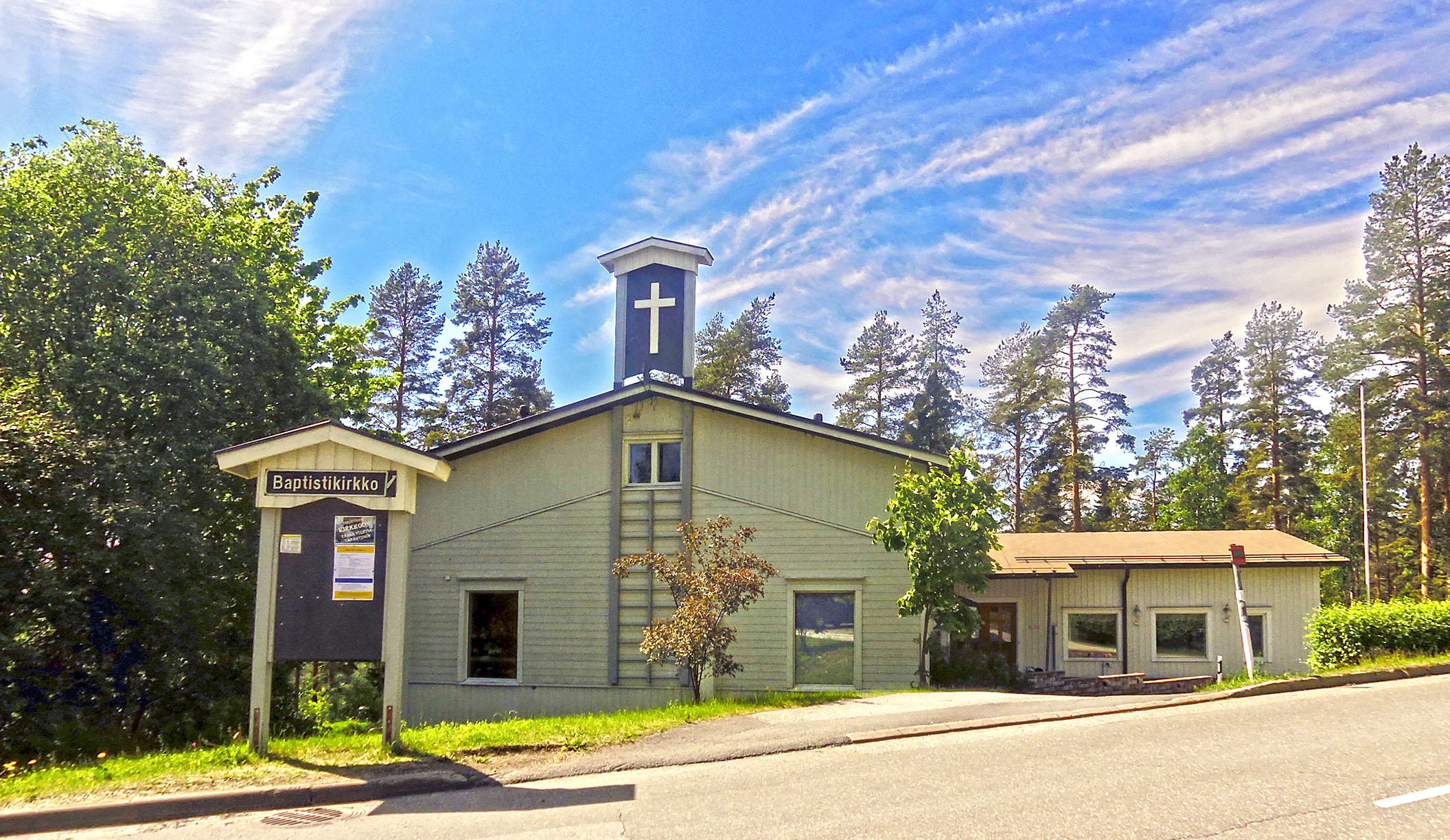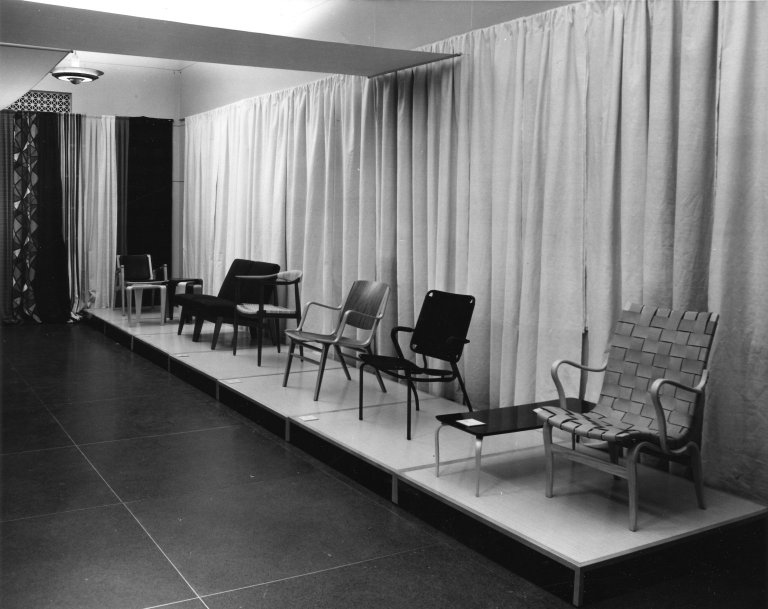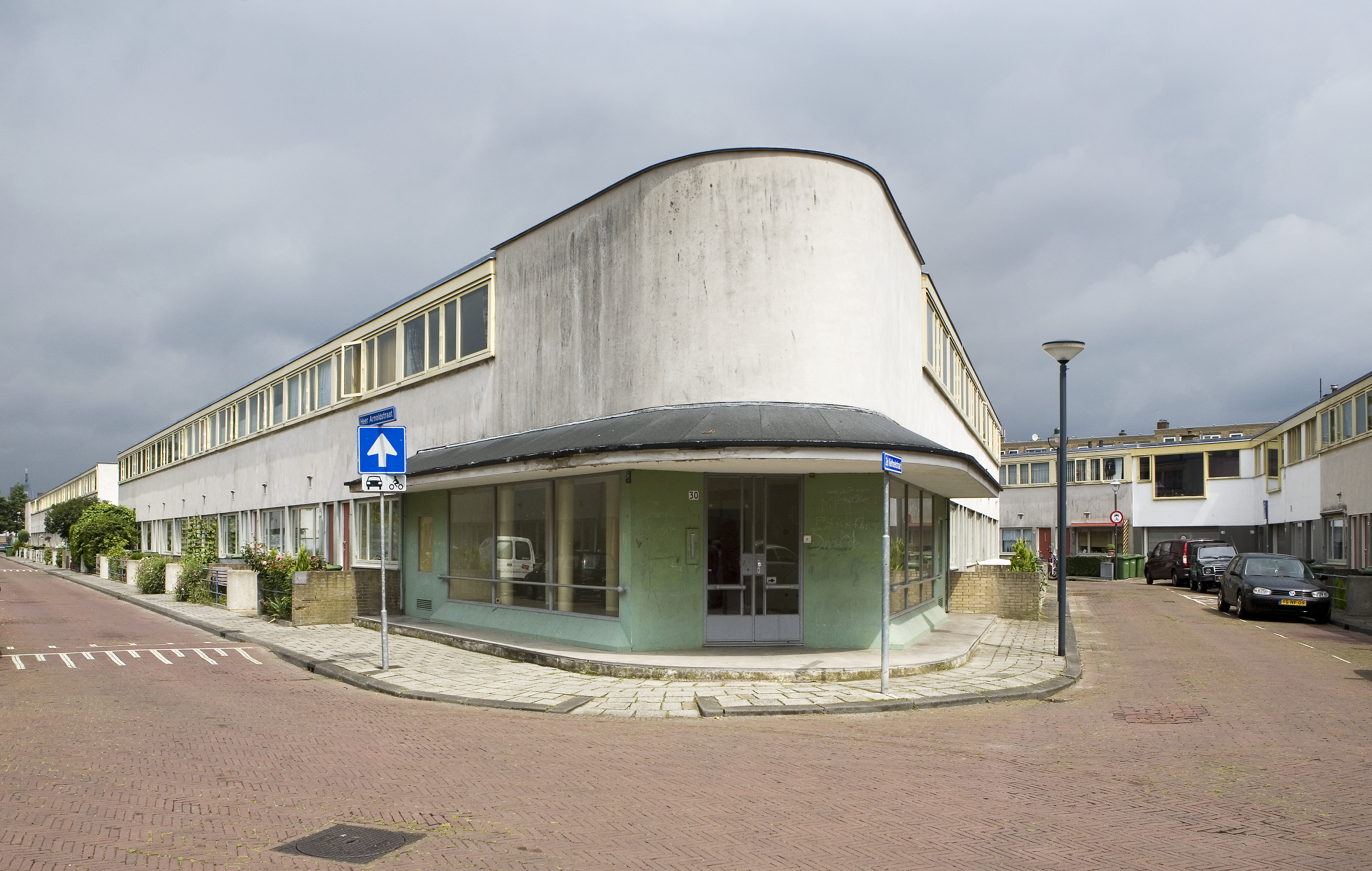|
Alvar Aalto
Hugo Alvar Henrik Aalto (; 3 February 1898 – 11 May 1976) was a Finnish architect and designer. His work includes architecture, furniture, textiles and glassware, as well as sculptures and paintings. He never regarded himself as an artist, seeing painting and sculpture as "branches of the tree whose trunk is architecture." Aalto's early career ran in parallel with the rapid economic growth and industrialization of Finland during the first half of the 20th century. Many of his clients were industrialists, among them the Ahlström-Gullichsen family, who became his patrons. The span of his career, from the 1920s to the 1970s, is reflected in the styles of his work, ranging from Nordic Classicism of the early work, to a rational International Style (architecture), International Style Modernism during the 1930s to a more organic modernist style from the 1940s onwards. His architectural work, throughout his entire career, is characterized by a concern for design as Gesamtkunstwerk— ... [...More Info...] [...Related Items...] OR: [Wikipedia] [Google] [Baidu] [Amazon] |
Alvar Aalto Museum
The Alvar Aalto Museum is a Finland, Finnish museum operating in two cities, Jyväskylä and Helsinki, in two locations each, dedicated to architect and designer Alvar Aalto. All four locations are open to the public. They are: *The Alvar Aalto Museum in Jyväskylä, which is a museum specialised in architecture and design and functions as the national and international centre on all things related to Alvar Aalto, Aalto (in more detail below). *The Muuratsalo Experiential House (in more detail below) *Villa Aalto in Munkkiniemi, Helsinki *Studio Aalto, also in Munkkiniemi, Helsinki The Alvar Aalto Museum in Jyväskylä This museum, which is specialised in architecture and design, is located in Jyväskylä. It was founded in 1966 to foster the legacy of the architecture of Alvar Aalto. The museum is located in a building designed by Aalto and completed in 1973. The museum functions as a centre of information on all things related to Aalto, and it organises exhibitions both in Fin ... [...More Info...] [...Related Items...] OR: [Wikipedia] [Google] [Baidu] [Amazon] |
Kuortane
Kuortane is a municipality of Finland. It is located in the South Ostrobothnia region. The municipality has a population of () and covers an area of of which is water. The population density is . The neighboring municipalities of Kuortane are Alajärvi, Alavus, Lapua and Seinäjoki. The municipality is unilingually Finnish. Kuortane has a notable history of pine tar production. It is currently well known for the Kuortaneen urheilulukio, a sports institute (Olympic Training centre) and training facility overseen by the Finnish Olympic Committee where many young Finnish athletes study and train. Both the women's national under-18 ice hockey team and Team Kuortane of the Naisten Liiga are based at the institute. Kuortane is also known as the birthplace of world-famous architect Alvar Aalto and . Notable people * Alvar Aalto Hugo Alvar Henrik Aalto (; 3 February 1898 – 11 May 1976) was a Finnish architect and designer. His work includes architecture, furniture, text ... [...More Info...] [...Related Items...] OR: [Wikipedia] [Google] [Baidu] [Amazon] |
Textiles
Textile is an Hyponymy and hypernymy, umbrella term that includes various Fiber, fiber-based materials, including fibers, yarns, Staple (textiles)#Filament fiber, filaments, Thread (yarn), threads, and different types of #Fabric, fabric. At first, the word "textiles" only referred to woven fabrics. However, weaving is not the only manufacturing method, and many other methods were later developed to form textile structures based on their intended use. Knitting and Nonwoven, non-woven are other popular types of fabric manufacturing. In the contemporary world, textiles satisfy the material needs for versatile applications, from simple daily clothing to Bulletproof vest, bulletproof jackets, spacesuits, and Medical gown, doctor's gowns. Textiles are divided into two groups: consumer textiles for domestic purposes and technical textiles. In consumer textiles, Aesthetics (textile), aesthetics and Textile performance#Comfort, comfort are the most important factors, while in techn ... [...More Info...] [...Related Items...] OR: [Wikipedia] [Google] [Baidu] [Amazon] |
Erik Gunnar Asplund
Erik Gunnar Asplund (22 September 1885 – 20 October 1940) was a Swedish architect, mostly known as a key representative of Nordic Classicism of the 1920s during the last decade of his life. At this time, he was a major proponent of the modernist style which made its breakthrough in Sweden at the Stockholm International Exhibition (1930). Asplund was professor of architecture at the Royal Institute of Technology from 1931. His appointment was marked by a lecture, later published under the title "Our architectonic concept of space." The Woodland Crematorium at Stockholm South Cemetery (1935-1940) is considered his finest work and one of the masterpieces of modern architecture. Major works Among Asplund's most important works is the Stockholm Public Library, constructed between 1924 and 1928, which stands as the prototypical example of the Nordic Classicism and so-called Swedish Grace movement. It was particularly influential on the proposal submitted for the competition fo ... [...More Info...] [...Related Items...] OR: [Wikipedia] [Google] [Baidu] [Amazon] |
Museum Of Modern Art
The Museum of Modern Art (MoMA) is an art museum located in Midtown Manhattan, New York City, on 53rd Street (Manhattan), 53rd Street between Fifth Avenue, Fifth and Sixth Avenues. MoMA's collection spans the late 19th century to the present, and includes over 200,000 works of architecture and design, drawing, painting, sculpture, photography, screen printing, prints, book illustration, illustrated and artist's books, film, as well as electronic media. The institution was conceived in 1929 by Abby Aldrich Rockefeller, Lillie P. Bliss, and Mary Quinn Sullivan. Initially located in the Crown Building (Manhattan), Heckscher Building on Fifth Avenue, it opened just days after the Wall Street Crash of 1929, Wall Street Crash. The museum was led by Anson Goodyear, A. Conger Goodyear as president and Abby Rockefeller as treasurer, with Alfred H. Barr Jr., Alfred H. Barr Jr. as its first director. Under Barr's leadership, the museum's collection rapidly expanded, beginning with an inaug ... [...More Info...] [...Related Items...] OR: [Wikipedia] [Google] [Baidu] [Amazon] |
Jyväskylä
Jyväskylä () is a city in Finland and the regional capital of Central Finland. It is located in the Finnish Lakeland. The population of Jyväskylä is approximately , while the Jyväskylä sub-region, sub-region has a population of approximately . It is Finland's most populous Municipalities of Finland, municipality, and fifth most populous List of urban areas in Finland by population, urban area. Jyväskylä is located about northeast of Tampere, the third largest city in Finland; and about north of Helsinki, the national capital. The Jyväskylä sub-region includes Jyväskylä, Hankasalmi, Laukaa, Muurame, Petäjävesi, Toivakka, and Uurainen. Other neighbouring municipalities of Jyväskylä are Joutsa, Jämsä and Luhanka. Jyväskylä is the largest city in the Central Finland and Finnish Lakeland region. Jyväskylä was one of the fastest growing cities in Finland during the 20th century; in 1940, there were only 8,000 inhabitants in Jyväskylä. Elias Lönnrot, the auth ... [...More Info...] [...Related Items...] OR: [Wikipedia] [Google] [Baidu] [Amazon] |
George Nelson (designer)
George Nelson (29 May 1908 – 5 March 1986) was an American industrial designer. While lead designer for the Herman Miller (manufacturer), Herman Miller furniture company, Nelson and his design studio, George Nelson Associates, designed 20th-century modernist furniture. He is considered a founder of American modernist design. Early life Nelson was born on May 29, 1908, in Hartford, Connecticut, to Jewish parents Simeon Nelson and Lillian Canterow Nelson. His parents owned a drugstore. Nelson graduated from Hartford Public High School in 1924, and thereafter attended Yale University. He did not originally set out to become an architect; he happened upon the architecture school at Yale, when he ducked into a building during a rainstorm, in order to get out of the rain. Walking through the building, he came upon an exhibit of students' works entitled "A Cemetery Gateway". Nelson met with some early recognition while still an undergraduate, when he was published in ''Pencil Poin ... [...More Info...] [...Related Items...] OR: [Wikipedia] [Google] [Baidu] [Amazon] |
Charles And Ray Eames
Charles Eames ( Charles Eames, Jr) and Ray Eames ( Ray-Bernice Eames) were an American married couple of industrial designers who made significant historical contributions to the development of modern architecture and furniture through the work of the Eames Office. They also worked in the fields of industrial and graphic design, fine art, and film. Charles was the public face of the Eames Office, but Ray and Charles worked together as creative partners and employed a diverse creative staff. Among their most recognized designs is the Eames Lounge Chair and the Eames Dining Chair. Background Charles Eames secured an architecture scholarship at Washington University, but his devotion to the practices of Frank Lloyd Wright caused issues with his tutors and he left after just two years of study. He met Ray Kaiser at Cranbrook Academy of Art in 1940. Charles arrived at the school on an industrial design fellowship as recommended by Eliel Saarinen, but soon became an instructor. Ray ... [...More Info...] [...Related Items...] OR: [Wikipedia] [Google] [Baidu] [Amazon] |
Mid-century Modern
Mid-century modern (MCM) is a movement in interior design, product design, graphic design, architecture and urban development that was present in all the world, but more popular in North America, Brazil and Europe from roughly 1945 to 1970 during the United States's post-World War II period. MCM-style decor and architecture have seen a major resurgence that began in the late 1990s and continues today. The term was used as early as the mid-1950s, and was defined as a design movement by Cara Greenberg in her 1984 book ''Mid-Century Modern: Furniture of the 1950s''. It is now recognized by scholars and museums worldwide as a significant design movement. The MCM design aesthetic is modern in style and construction, aligned with the Modernist movement of the period. It is typically characterized by clean, simple lines and honest use of materials, and generally does not include decorative embellishments. On the exterior, a MCM home is normally very wide, partial brick ... [...More Info...] [...Related Items...] OR: [Wikipedia] [Google] [Baidu] [Amazon] |
Scandinavian Design
Scandinavian design is a design movement characterized by simplicity, minimalism and functionality that emerged in the early 20th century, and subsequently flourished in the 1950s throughout the five Nordic countries: Denmark, Finland, Norway, Sweden, and Iceland. Scandinavian designers are known especially for household goods including furniture, textiles, ceramics, lamps, and glass, but Scandinavian design has been extended to industrial design such as of consumer electronics, mobile phones, and cars. Overview In 1914, the Danish ''Selskabet for Dekorativ Kunst'' (Company for Decorative Arts) launched its ' (literally "Graceful Work") magazine. Its title became the name of a new Danish style of arts and crafts, both in objects and in architecture, to rival Art Nouveau and Jugendstil. From the 1930s, designers such as Alvar Aalto (architecture, furniture, textiles), Arne Jacobsen (chairs), Borge Mogensen (furniture), Hans J. Wegner (chairs), Verner Panton (plastic chairs), ... [...More Info...] [...Related Items...] OR: [Wikipedia] [Google] [Baidu] [Amazon] |
Gesamtkunstwerk
A ''Gesamtkunstwerk'' (, 'total work of art', 'ideal work of art', 'universal artwork', 'synthesis of the arts', 'comprehensive artwork', or 'all-embracing art form') is a work of art that makes use of all or many art forms or strives to do so. The term is a German loanword accepted in English as a term in aesthetics. Background The term was developed by the German writer and philosopher K. F. E. Trahndorff in his 1827 essay ''Ästhetik oder Lehre von Weltanschauung und Kunst'' (or 'Aesthetics, or Doctrine of Worldview and Art'). The German opera composer Richard Wagner used the term in two 1849 essays, and the word has become particularly associated with his aesthetic ideals. It is unclear whether Wagner knew of Trahndorff's essay. In France in the 1850s, Viollet-le-Duc was a proponent of integrating major arts (architecture) and minor arts (decorative arts), ''un art total''. This led to a fierce combat with the Beaux Arts academy in Paris who refused Viollet le Duc's edu ... [...More Info...] [...Related Items...] OR: [Wikipedia] [Google] [Baidu] [Amazon] |
International Style (architecture)
The International Style is a major architectural style and movement that began in western Europe in the 1920s and dominated modern architecture until the 1970s. It is defined by strict adherence to Functionalism (architecture), functional and Form follows function, utilitarian designs and construction methods, typically expressed through minimalism. The style is characterized by Modular building, modular and Rectilinear polygon, rectilinear forms, Plane (mathematics), flat surfaces devoid of ornamentation and decoration, open and airy interiors that blend with the exterior, and the use of glass, steel, and concrete. The International Style is sometimes called rationalist architecture and the modern movement, although the former is mostly used in English to refer specifically to either Rationalism (architecture), Italian rationalism or the style that developed in 1920s Europe more broadly. In continental Europe, this and related styles are variably called Functionalism (architectu ... [...More Info...] [...Related Items...] OR: [Wikipedia] [Google] [Baidu] [Amazon] |








